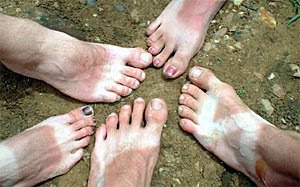 Image: Sacramento Sirens Football Star Kaitlin Porter
Image: Sacramento Sirens Football Star Kaitlin PorterIt has been widely reported in the news and on the internet that female athletes appear to suffer more concussions than their male counterparts (for example, see ABC news link). In 2007, researchers reported about the incidence of concussions in high school and college athletes by surveying injury reports from 100 U.S. high schools and 180 U.S. colleges during a one year period (link to full length article in the Journal of Athletic Training). What did these researchers find? And what is a concussion?
From eMedicine, one definition of concussion is a condition in which there is a traumatically induced alteration in mental status, with or without an associated loss of consciousness. A broader definition for concussion is a traumatically induced physiologic disruption in brain function that is manifest by loss of consciousness, memory loss, alteration of mental state or personality, or focal neurologic deficits.
- An estimated 300
000 sport-related traumatic brain injuries, predominantly concussions, occur annually in the United States. Sports are second only to motor vehicle crashes as the leading cause of traumatic brain injury among people aged 15 to 24 years.
- In sports played by both sexes, girls sustained more concussions than boys in both high school and college.
- Concussion rates were higher among collegiate athletes, but concussions represented a higher proportion of all injuries sustained by high school athletes.
- Based on the national estimate, the majority of concussions resulted from participation in football, followed by girls' soccer, boys' soccer, and girls' basketball.
For a more in-depth medical discussion of concussions see this article at eMedicine (link).
~~~ BIO26 ~~~







